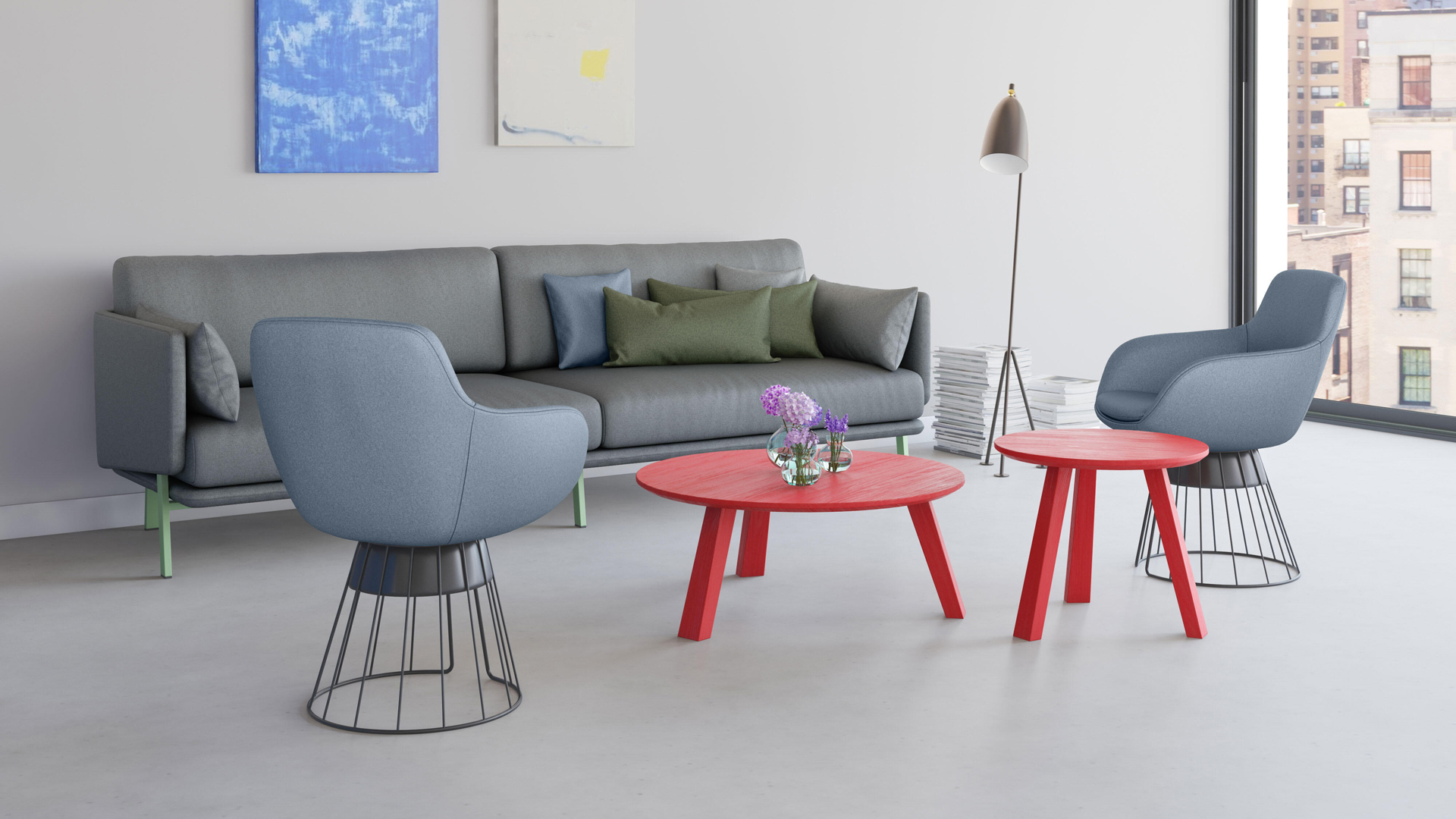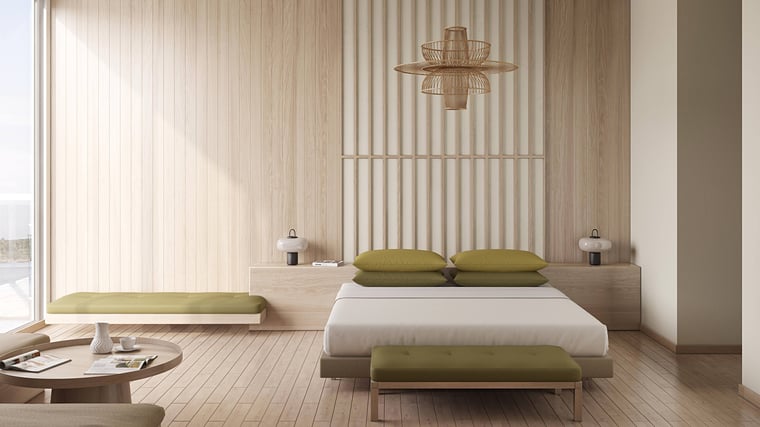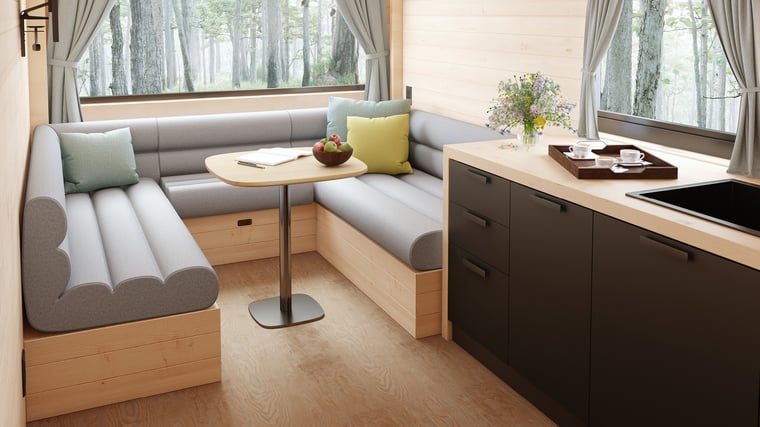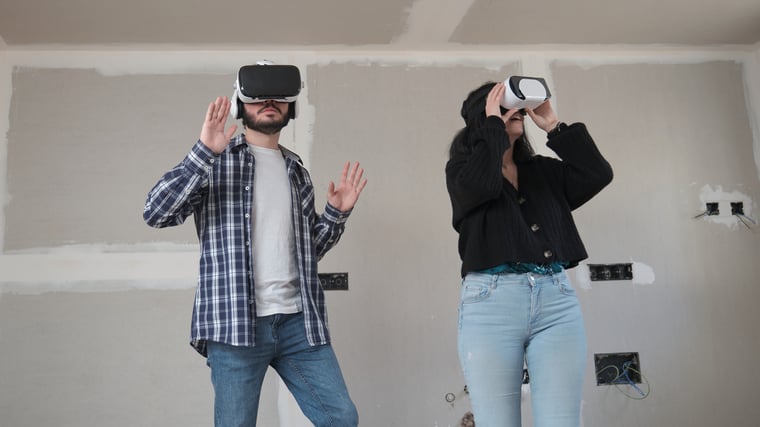
Maximising small spaces with 3D design and digital visualisation
Published by Admin on
Jun 5, 2023 5:51:32 PM
Tackling form and function with a smart solution
As the world's population continues to grow and urbanisation becomes increasingly common, the demand for small-space living continues to rise. With this comes the challenge of making the most of limited space without sacrificing functionality or style. Fortunately, advancements in 3D design and digital visualisation technology have made it easier than ever to design and visualise small spaces.
Designing small spaces with 3D visualisation
When it comes to designing small spaces, traditional design methods can be limiting. With 3D visualisation, however, designers can create a virtual model of the space and experiment with different layouts and furniture configurations. This allows them to maximise the available space and ensure that every inch is utilised in the most effective way possible.
One of the biggest advantages of 3D visualisation in small space design is the ability to see how everything will fit together before any physical changes are made. This is especially important when it comes to furniture placement, as a poorly placed piece can make a small space feel cramped and uninviting. With 3D visualisation, designers can experiment with different furniture arrangements and see how they will look and feel in the space before making any actual changes.
Digital visualisation can also help with the selection of furniture and decor for small spaces. With the ability to upload 3D models of furniture and fabrics, designers can experiment with different pieces to see how they will look and fit in the space. This helps to ensure that all furniture and decor are both functional and stylish and that every piece serves a purpose.
Experimenting with 3D fabric textures
Another exciting development in digital visualisation technology is the use of 3D fabric textures. Twinbru, for example, offers a platform where users can upload images of fabric and create a digital twin, which can be used in 3D visualisation software. This means that designers can experiment with different fabric options and see how they will look in the space before making any actual changes.
The use of 3D fabric textures is particularly useful in small space design, where the selection of fabrics can greatly impact the overall look and feel of the space. By experimenting with different fabric options, designers can create a cohesive look and ensure that all elements of the design work together.
Creating functional and stylish small spaces
With the help of 3D visualisation and 3D fabric texture technology, it is possible to create small spaces that are both functional and stylish. By experimenting with different furniture layouts and decor options, designers can create a space that is optimised for the needs of the occupants while still maintaining a sense of style.
One of the keys to designing functional small spaces is to focus on multi-functional furniture. This means selecting pieces that serve multiple purposes, such as a sofa that converts into a bed or a coffee table that doubles as a storage unit. By using multi-functional furniture, designers can maximise the available space and ensure that every piece serves a purpose.
Another important consideration in small space design is the use of colour and lighting. Lighter colours can help to make a space feel larger and more open, while strategic lighting can help to create different moods and zones within the space.
Creating a virtual tour of a small space
Once the design has been finalised, 3D visualisation technology can also be used to create a virtual tour of the space. This allows the occupants to see how everything will look and feel before making any actual changes.
The use of 3D fabric textures in virtual tours is especially useful, as it allows the occupants to see how different fabrics will look and feel in the space. This helps to ensure that the final design is both functional and visually appealing and that every piece serves a purpose.
Overall, 3D design and digital visualisation technology have revolutionised the way we design and visualise small spaces. It enables us to maximise the available space and create functional and stylish interiors that perfectly fit our needs and desires. With the help of 3D fabric textures, designers and homeowners can easily visualise different fabrics, textures, and colours, and experiment with different styles without committing to a physical purchase. This not only saves time and money but also helps in reducing waste and protecting the environment.
Using digital visualisation is for everyone
Whether you are a professional interior designer or a homeowner, incorporating 3D design and digital visualisation technology in your design process can make a significant difference in the outcome. It can help you create a space that perfectly reflects your personality and style, while also making the most out of the available space. With the help of 3D fabric textures, you can experiment with different fabrics and colours, and bring your vision to life in a more sustainable and cost-effective way.
As technology continues to advance, we can expect to see more innovations in the field of interior design and 3D visualisation. At Twinbru, we are committed to staying at the forefront of these developments and providing our clients with the most innovative and advanced 3D fabric texture technology available. So whether you are designing a small apartment, a cosy office, or a stylish restaurant, let us help you bring your vision to life in the most efficient and sustainable way possible.